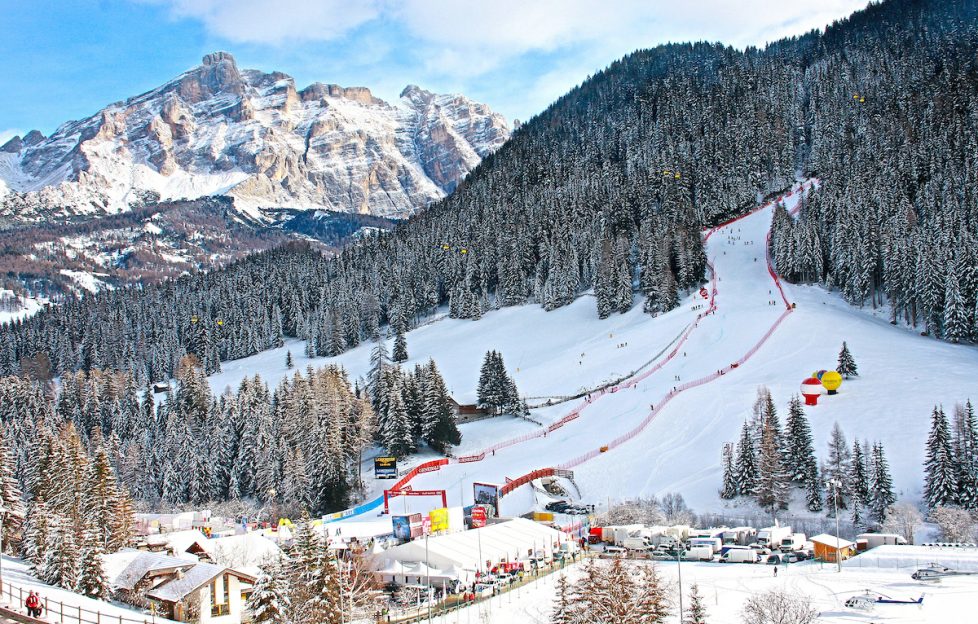Alta Badia in the South Tyrol, which features on the World Cup downhill circuit each year, is part of the famous Sella Ronda and also integral to the massive Dolomiti Superski ski area, is one of the key ski resorts in the Italian Dolomites. With its stunning panoramas, laid-back vibe, beautiful little villages, predominantly blue run skiing, and world class gastronomic offerings, this is a great ski area for families or gourmets. And with the opening of a new airline route into Bolzano, just an hour away, it’s easier and quicker to get there than ever before.
The area is a fascinating one with features you certainly won’t find anywhere else. Built around five mountain villages – quaint San Cassiano, chic but pricey Corvara, more family oriented and cheaper Colfosco, sleepy La Villa and Badia – it is in an area that belonged to Austria until a century ago, is now very Italian, but in which the majority of locals speak a Romance language called Ladin, of which they are fiercely proud.
But mostly it’s all about the food…
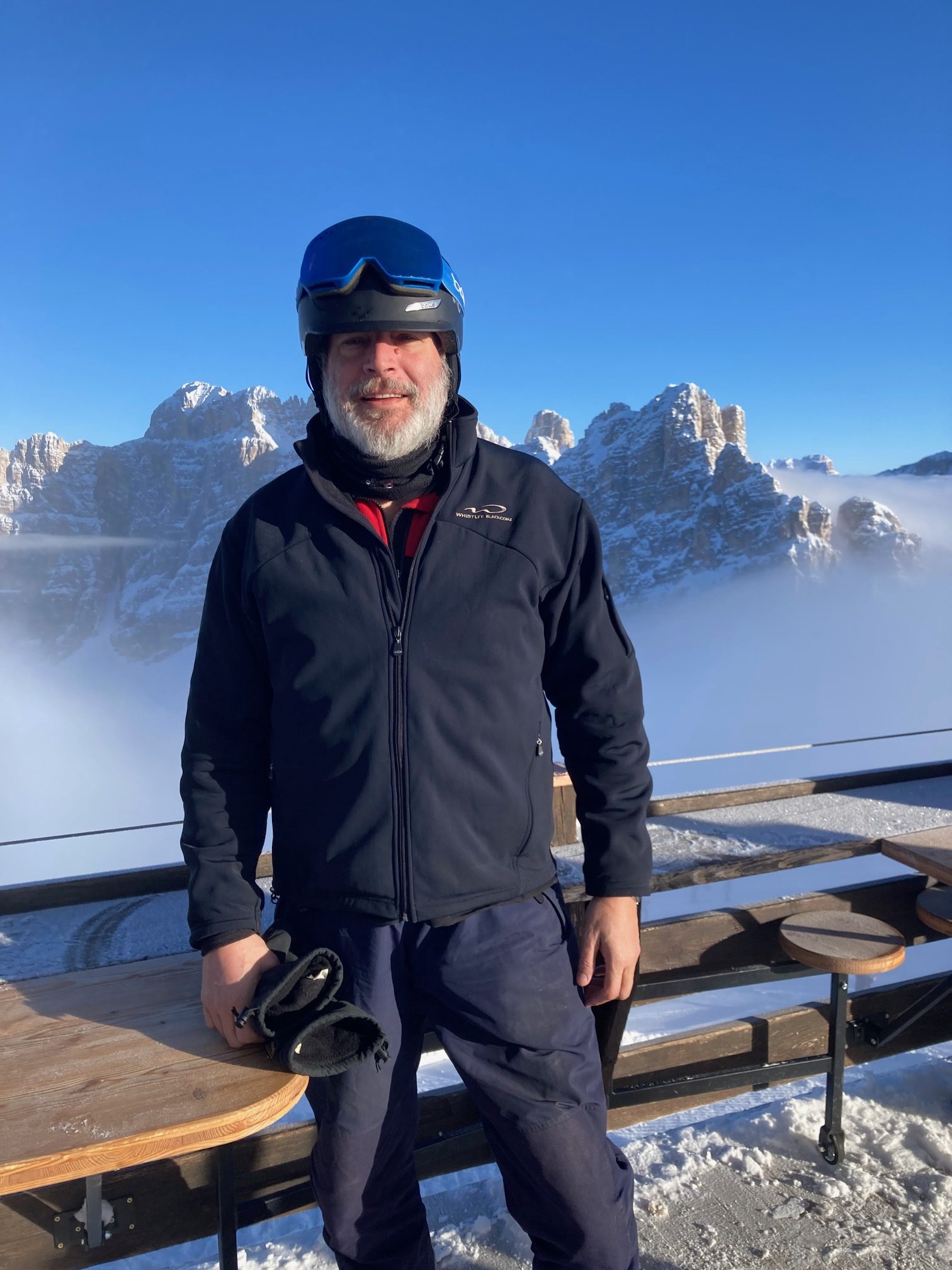
The Food:
This is probably the only ski report I’ll ever do which starts with the food rather than the white stuff, but that is unavoidable given Alta Badia’s culinary pedigree. With multiple Michelin stars the place is a remarkable honey pot of outstanding food.
The food in Alta Badia’s towns is outstanding, and it’s generally way more sophisticated than the sort of cheese- and carb-fest you get in most ski resorts. The Michelin-starred La Stüa de Michil at La Perla in Corvara is one of my favourite ski restaurants, but there are any number of other storied eateries – there are another nine restaurants in the resort which feature in the Michelin guide. There are also some wonderful cafes and neighbourhood restaurants serving excellent fare.
The on-mountain food is particularly remarkable, and this season eight of the 40 lodges on the mountain are taking part in “A Taste for Skiing” programme in which famous Michelin-starred chefs (including a pair of three-star chefs) have produced eight dishes that are on sale at the following mountain huts – Utia Jimmi (which is at 2,100 metres and has a dish from a three-star chef), Utia Bioch (2,079m, also with a dish from a three-star chef), Utia Edlelweiss (1,850m), Utia I Tabla (2,040m), Utia Las Vegas (2,050m), Club Moritzino (2,100m) and Utia Le (1,840m).
As if that’s not enough, there’s also a “Sommelier On The Slopes” scheme where you spend the day with a ski instructor and wine expert who will guide you through the (surprisingly good) wines of the South Tyrol. If food is more important than wine there’s also a “Gourmet Ski Safari”.
However, the gastronomic highlight of my tour was a memorable lunch made over a wood-fired stove in her small, private mountain hut by local chef Maria Sofia. ‘Brunch dla Munt’ or ‘Brunch in the Mountain Hut with Maria Sofia: The Taste of the Mountains’ started when we followed a tobogganing track through the forest until we came to a clearing with a small mountain hut in it. What followed was epic: fizz on the terrace beneath a bluebird sky and then sublime dishes made from local produce like venison and carp which it was difficult to believe could be made in such a rudimentary surroundings.
The Skiing
The Italian Dolomites offers a whole host of decent skiing, and all of it is accessible from Alta Badia, which is part of the Dolomiti Superski area, where one pass gives you access to more than 1,200 kilometres of slopes and 450 lifts across 12 ski resorts. That gives a wide range of terrain, from the tree skiing of Cortina to the nice steep reds at Val Gardena, the beginner-friendly slopes of Kronplatz and some challenging off piste at Arabba.
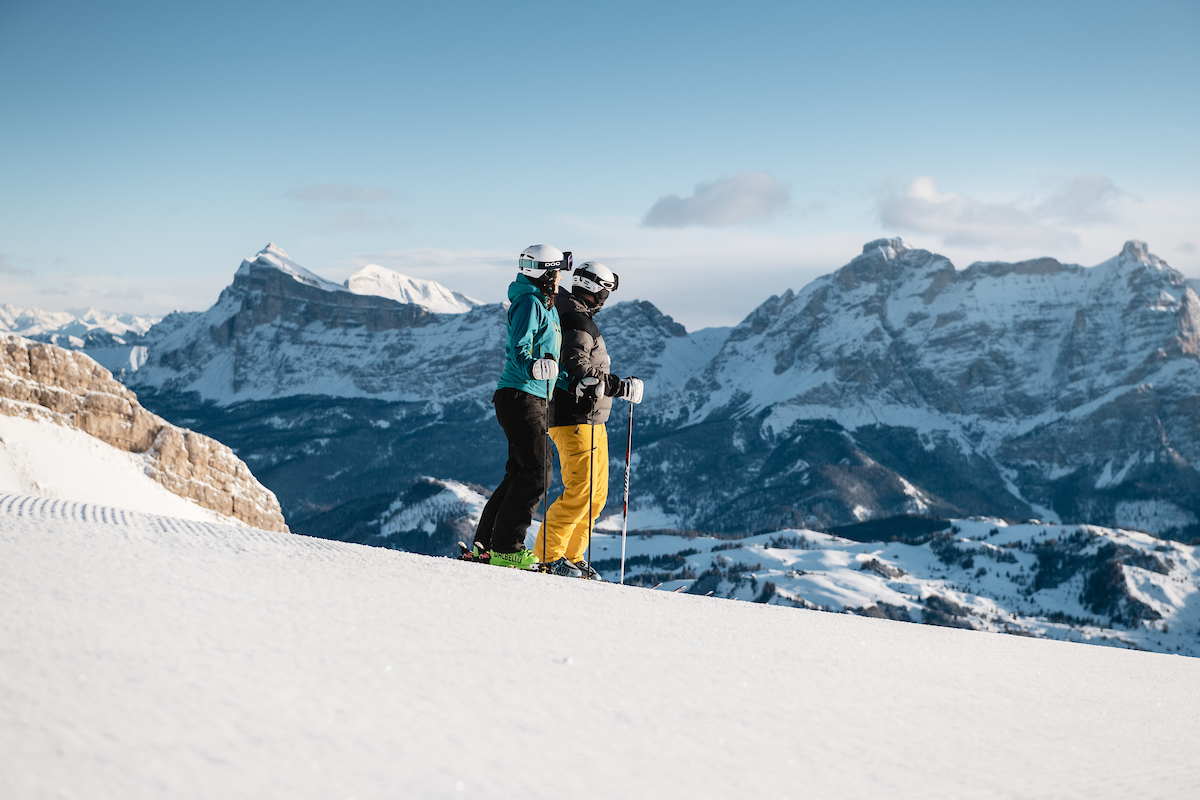
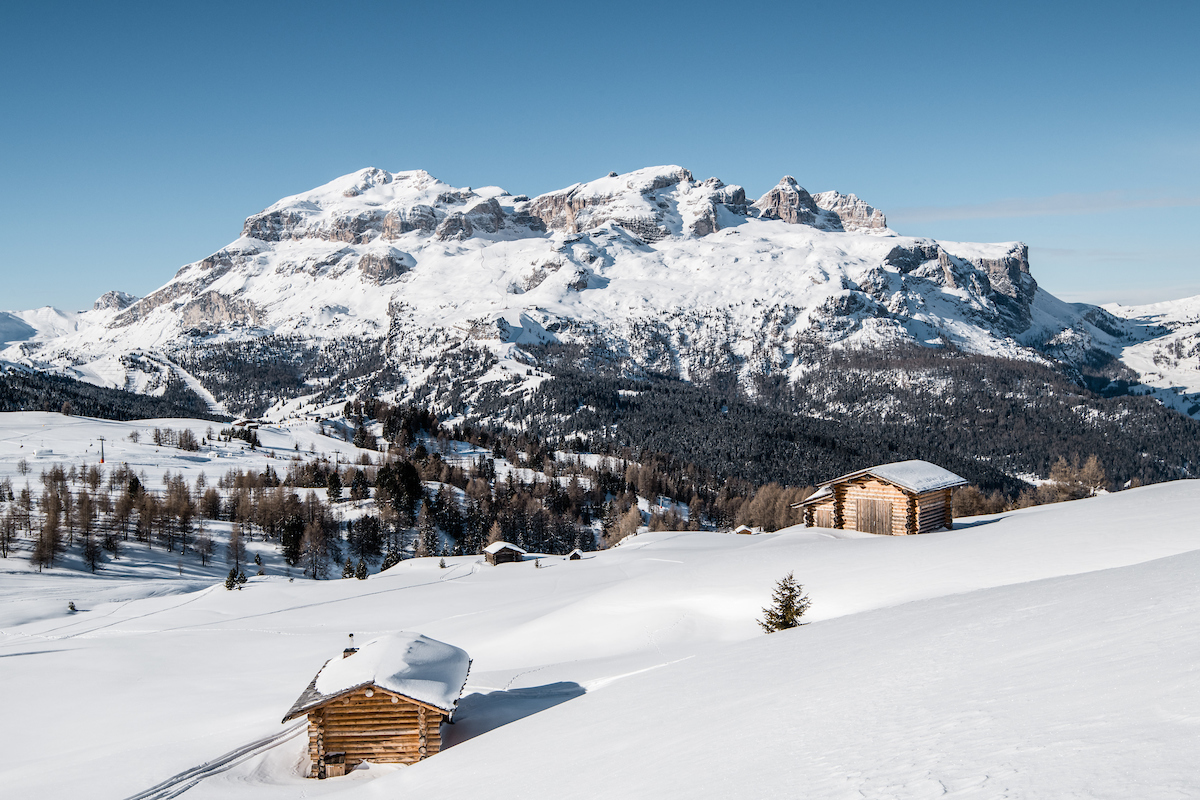
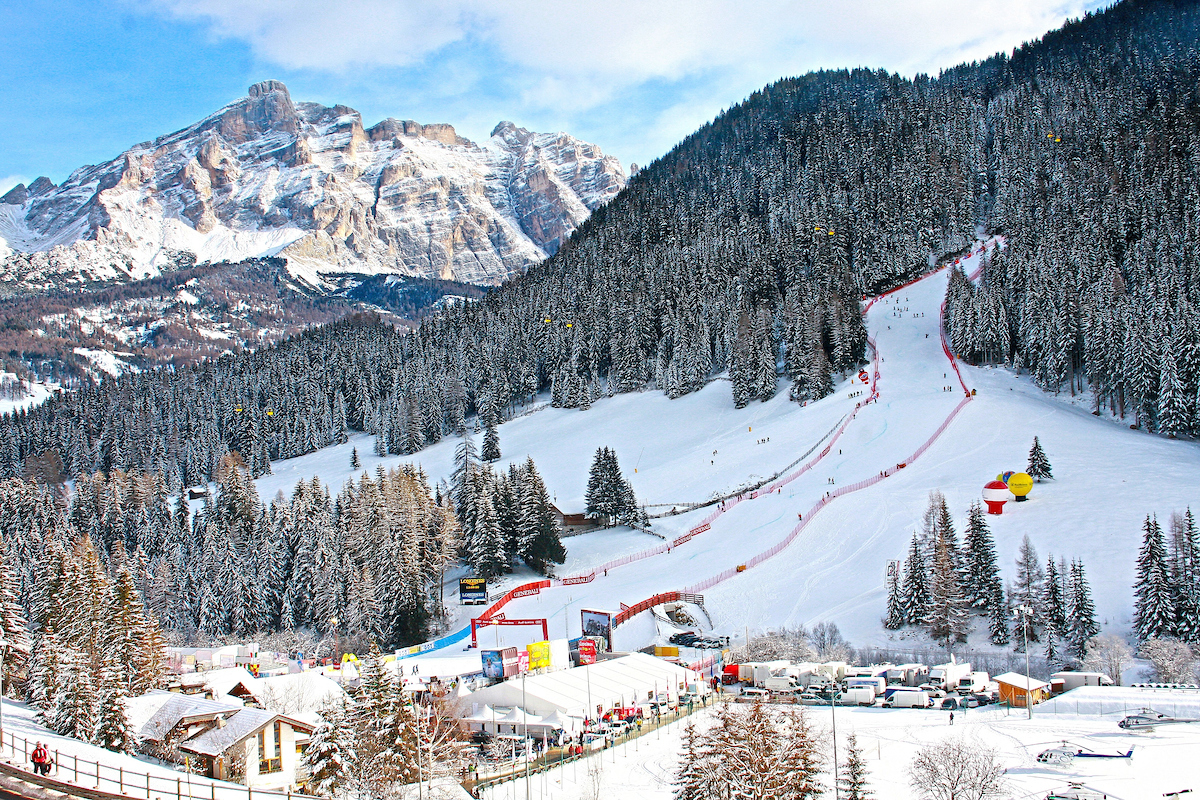
But mainly the pleasingly snowsure Dolomiti resorts (the best conditions are in February) are dominated by easy-cruising blues that make this a haven for family ski trips and for those skiers and snowboarders who don’t want to be challenged too profoundly. Despite the fact that Alta Badia hosts a leg of the World Cup downhill series on the famous Gran Risa run, that is especially true of this lovely resort, which has 114 runs with 130km of pistes, with the highest point being at 2,778m while the base is at 1,324m. Of those runs, just 3% are blacks, 26% are reds and 71% are easy-cruising and generally quite short blues (less than 20 runs are over a kilometre), which means that you tend to spend a lot of time getting on and off ski lifts. The whole ski area is also pretty spread out and can be a bit discombobulating.
However, there is fun for more adventurous skiers if you’re prepared to go and find it. We caught a taxi up to the Passo Falzarego and took the Lagazuoi cable car to almost 2,800 where we got an amazing view over the Dolomites. This is also the beginning of the Lagazuoi Circuit, where you ski down the Hidden Valley to towards Armentarola down a 7.5km red run which drops more than 1,000 vertical metres. At the bottom, you hit a long flat where for 2 Euros each 20 skiers are dragged a couple of kilometres behind a horse-drawn sleigh back to the lift system.
Vallon is also worth a go. The chairlift brings you up to 2,500m, from where the black run piste 1 leads you into the red run piste 22 and funnels you 700 vertical metres down to the Passo Campolongo. I also enjoyed the Santa Croce area.
Sella Ronda
One of the great attractions of Alta Badia is that it’s part of the Sella Ronda, a 42km circular tour which takes you around the Sella massif, a monumental slab of rock which looks a little like Masada or Ayers Rock. You can ski the Sella Ronda in either direction, with a reasonably fit intermediate skier taking three hours (more if the lifts are busy). Start early so you can explore as much of the 500km of connected skiing in neighbouring resorts as possible. Each year there’s a race called the Sellaronda Skimarathon in which 550 two-skier teams compete.
Ski Passes
Ski passes for Alta Badia cost E67 for an adult for the day (E33 for a child and E47 for a junior), and E338 for a 6-day ski pass (E169 for children and E236 for juniors). There are, however, often special offers on the resort website, so check regularly.
Where to stay:
We stayed at the luxury four-star Ciasa Salares, a wonderful family-run hotel that’s 100 yards or so from the end of one of the runs. This is a quintessential Dolomites hotel, with massive wood-lined rooms, a lovely spa and hot tub, and a really welcoming staff. Best of all, though, was the food: pre-dinner drinks in the bar, followed by top notch meal in one of the two restaurants. The main restaurant is called Sori, but we also ate at their cellar restaurant Cocun, which had two Michelin stars until they decided to revert to a more traditional menu. Cocun also contains a remarkable dedicated chocolate and cheese rooms, not to mention a hidden spirits room which supplements the 24,000 bottles of wine in the hotel’s cellar, all of which are overseen by ridiculously knowledgeable sommelier Clemens, who also happens to be the youngest scion of the Weiser family, who own the hotel. Several big names in the ski business work with Ciasa Salares, including Edinburgh-based Ski Independence.
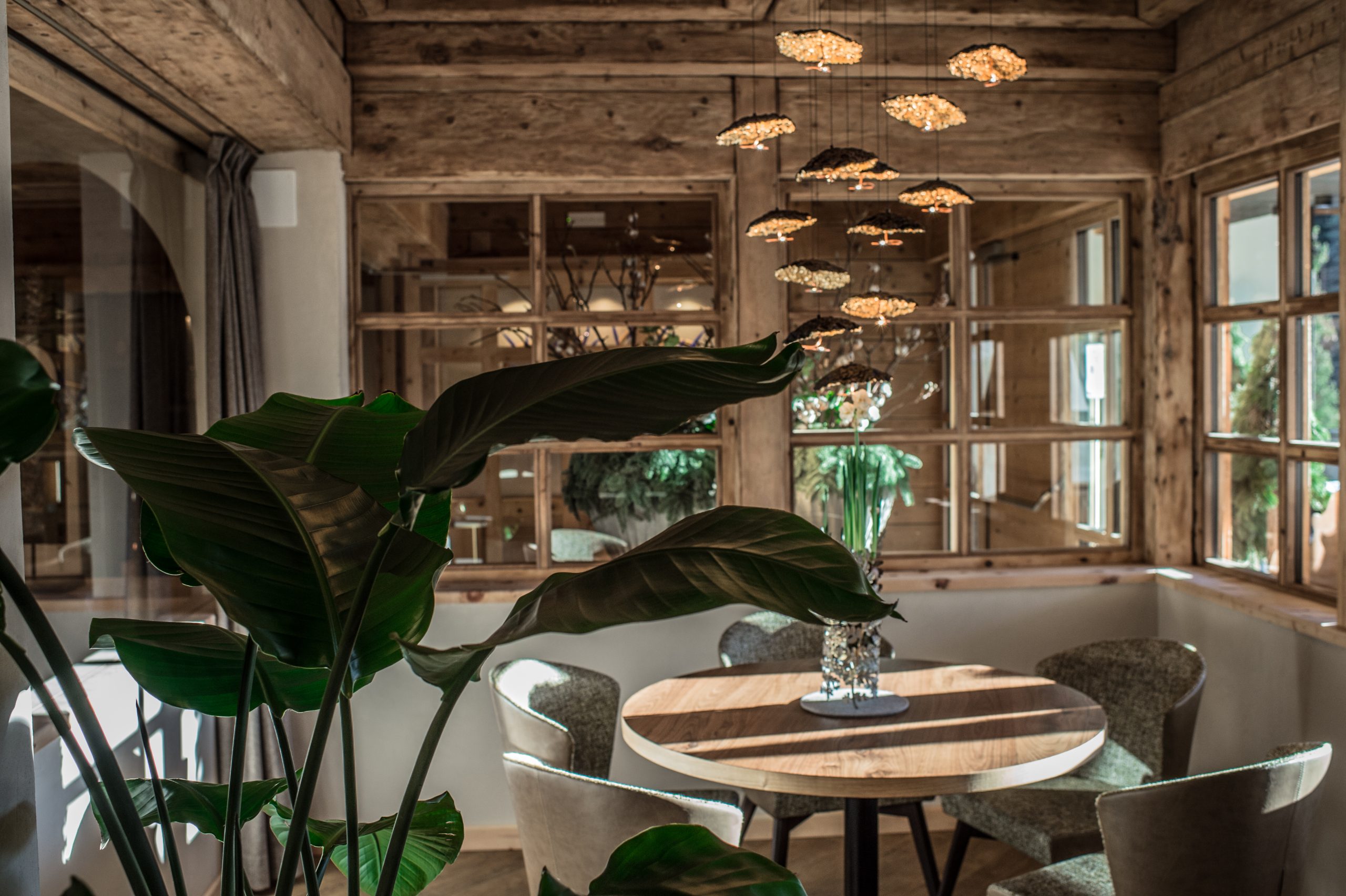
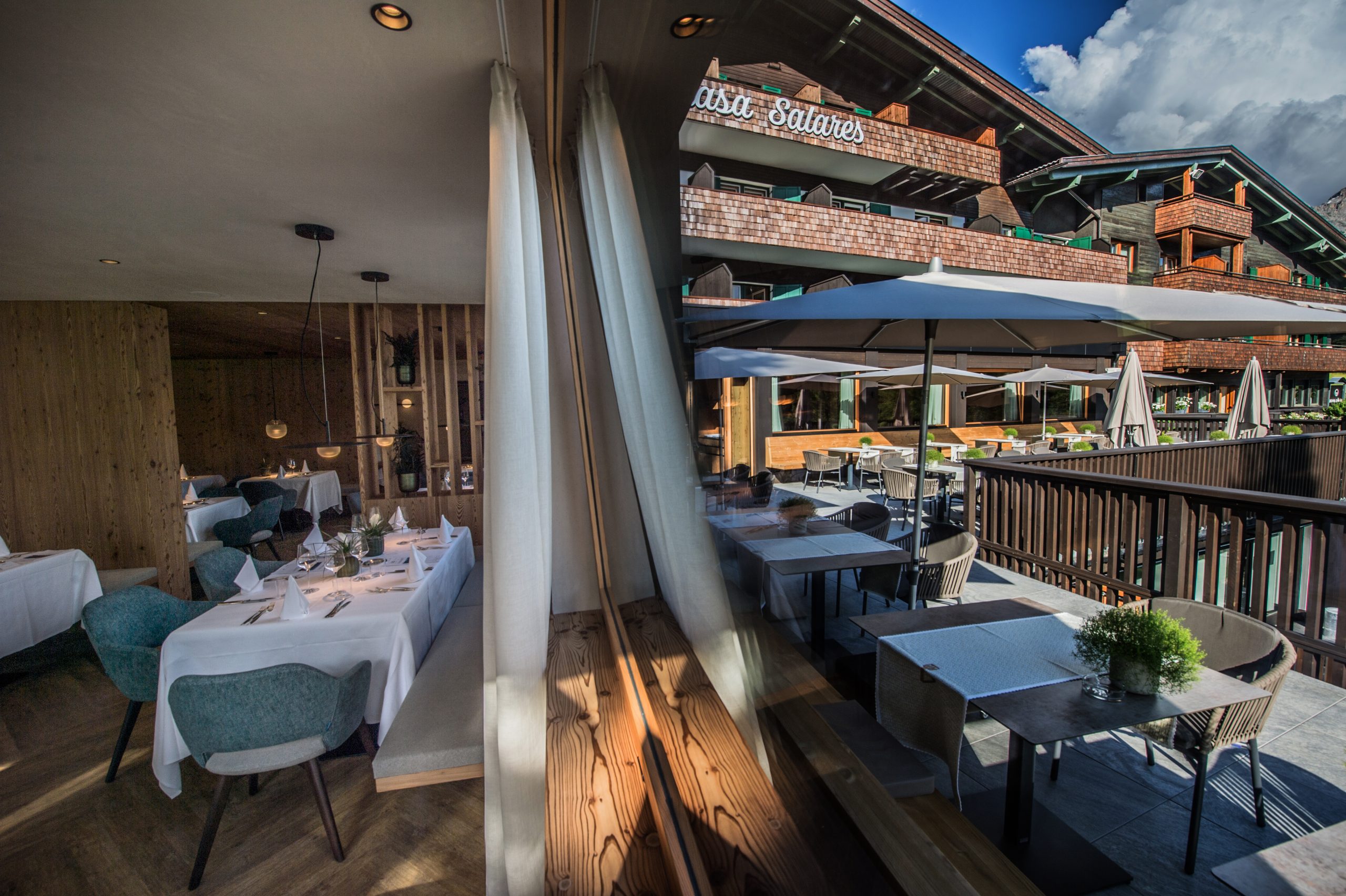

For non skiiers
As Alta Badia caters for a slightly older and more cultured customer, there’s a good chance the party will contain a non-alpine skier, so they have gone to great lengths to produce less adrenalized ways of enjoying the mountains that don’t require eating! You can learn to cross-country ski at the resort’s luxurious purpose-built cross-country ski school, learn to Telemark ski, explore the woods with herbalists, try your hand at weaving or baking, and take mountain rescue lessons with Tone and his dog. All can be accessed via www.altabadia.org
Getting there
We flew in a 76-seater De Haviland propeller plane from Stansted with Italian airline SkyAlps, which has just launched a new route to Bolzano, which is between 60-90 minutes from Alta Badia, depending on which roads are open. If you’re wanting to fly from Scotland, there are a whole host of possible airports to fly to, including: Innsbruck (130km), Venice (190km), Verona (215km), Milan/Bergamo (310km), Munich (330km) and Milan Malpensa (400km).
In Brief
We liked: The food, the character and the certainty of snow.
We didn’t like: The lack of advanced terrain, and spread out ski area.
TAGS

